Overview
The article delineates seven key advantages of air-assisted liquid cooling for data centers, emphasizing significant enhancements in:
- Energy efficiency
- Sustainability
- Cooling performance
- Scalability
- Reliability
- Integration
- Maintenance
- Redundancy
- Cost-effectiveness
Each advantage is substantiated by data and concrete examples, demonstrating how these systems elevate operational efficiency, lower costs, and positively impact environmental objectives. This makes air-assisted liquid cooling a strategic and compelling choice for contemporary data facilities.
Introduction
In the face of relentless demand for efficient data processing, cooling systems supporting data centers have become a critical focal point for innovation. Air assisted liquid cooling technology presents a transformative solution, significantly enhancing energy efficiency and operational performance while tackling the urgent challenges of sustainability. As organizations grapple with the complexities of integrating these advanced systems, pivotal questions emerge:
- How can these innovative cooling solutions not only reduce costs but also guarantee reliability and scalability in an ever-evolving digital landscape?
By delving into the multifaceted benefits of air assisted liquid cooling, we uncover essential insights for data centers aiming to optimize their operations.
Gagner-Toomey Associates: Pioneering Air Assisted Liquid Cooling Solutions
Gagner-Toomey Associates stands at the forefront of , particularly within the electronics sector. Their unwavering commitment to innovation is reflected in the they provide, which markedly enhance and . As the largest manufacturer globally of both standard and custom air-movers, of DC input Tube Axial fans, spanning from 15 to 280mm, and Centrifugal Blowers, from 15 to 225mm, all optimized for peak performance, efficiency, and minimal noise. By concentrating on temperature regulation, power control, and , Gagner-Toomey delivers tailored solutions that address the unique requirements of information hubs, ensuring and energy efficiency. The company collaborates with a diverse array of distinguished producers, reinforcing its position as a leader in developing solutions that not only tackle existing temperature management challenges but also lay the groundwork for future advancements in data center technology.
Recent strides in air assisted liquid cooling for fluid temperature regulation have revealed substantial benefits, including improved thermal management capabilities essential for (HPC). The endorsement of single-phase direct-to-chip fluid management by industry leaders such as NVIDIA bolsters the credibility of these technologies. Successful implementations by electronics companies underscore the efficacy of air assisted liquid cooling in enhancing operational efficiency and sustainability. With projections indicating that air-assisted fluid refrigeration and fluid-to-fluid heat exchange will constitute over a third of the for facilities by 2028, Gagner-Toomey is strategically positioned to lead this initiative in a transformative landscape. Their customer-centric approach, backed by a team of seasoned sales professionals, guarantees that they effectively respond to the evolving needs of their clients.

Energy Efficiency: Reducing Operational Costs with Air Assisted Liquid Cooling
systems significantly enhance , which leads to . By utilizing fluid as a medium, these systems can operate at higher temperatures compared to traditional air methods, which results in decreased . Research indicates that implementing air assisted liquid cooling can by as much as 20%, making it a .
Furthermore, the ability to maintain leads to and improved overall efficiency, ultimately benefiting profit margins. Notably, temperature regulation accounts for nearly 40% of the total energy consumed by information facilities, underscoring the importance of effective temperature management strategies.
Additionally, the global facility refrigeration market is projected to reach USD 42.48 billion by 2032, reflecting the growing demand for . A study conducted by the American Society of Mechanical Engineers (ASME) found that transitioning from 100% air temperature control to 75% fluid temperature management, utilizing air assisted liquid cooling, resulted in a 27% reduction in facility power consumption.
As Avi Mathur, Group Manager at Boyd, asserts, ‘Liquid refrigeration enhances server facility efficiency, decreasing energy consumption and promoting sustainability.
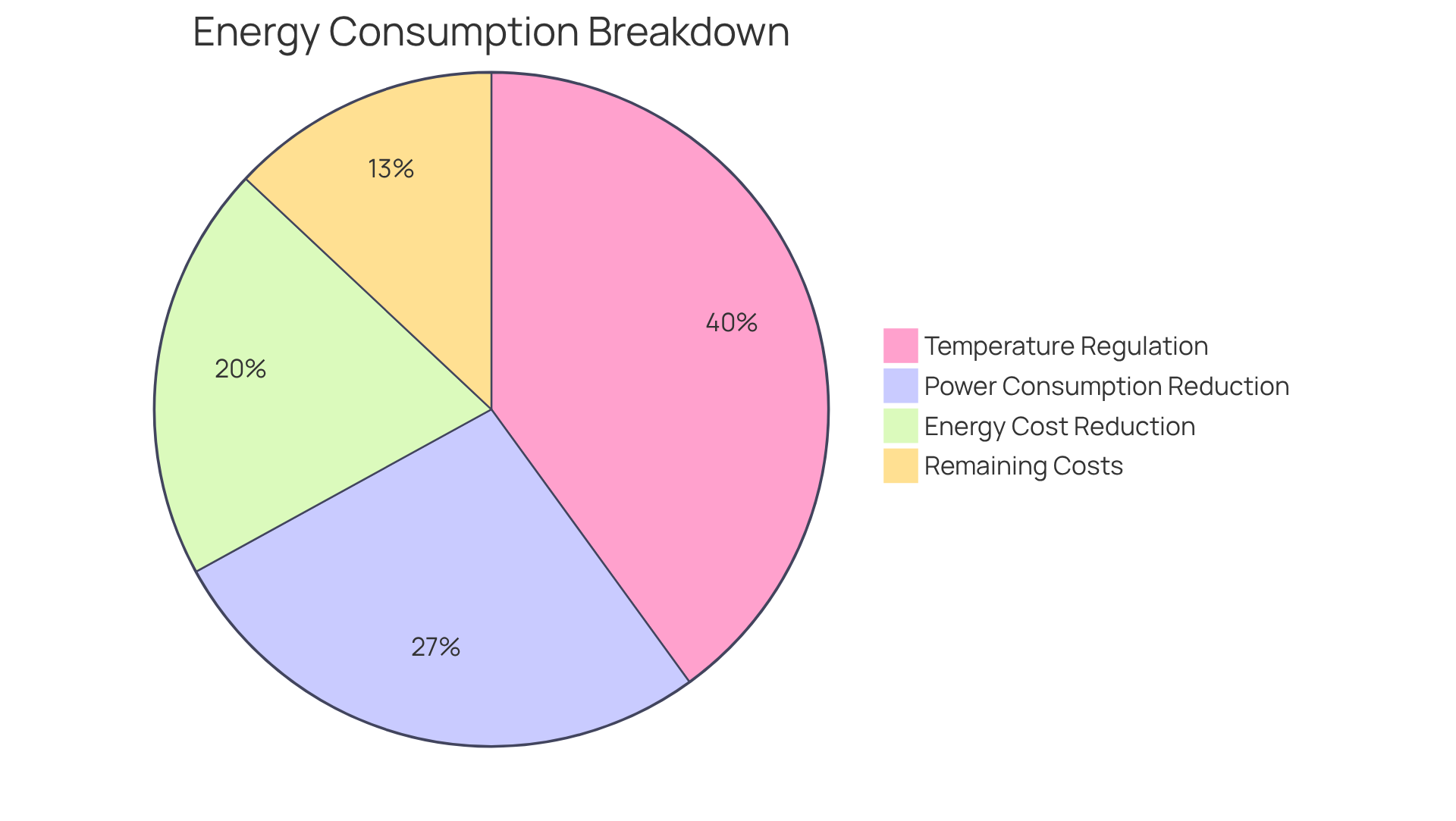
Sustainability: Enhancing Environmental Responsibility through Air Assisted Liquid Cooling
Air assisted liquid cooling systems significantly enhance and support within . By optimizing energy consumption, these systems play a pivotal role in mitigating associated with electricity generation.
Research indicates that can and greenhouse gas emissions by an impressive 15% to 82%. Furthermore, deploying these systems reduces reliance on extensive air circulation, leading to ; data facilities can save over 125 million liters of water annually per location.
As organizations increasingly commit to , embracing not only positions them as leaders in sustainability but also aligns with global efforts to and promote eco-friendly practices.

Cooling Performance: Achieving Optimal Server Temperatures with Air Assisted Liquid Cooling
systems are essential for managing fluid temperatures and maintaining , which is a and performance of operations. These systems proficiently transfer heat away from servers, effectively preventing overheating and mitigating the risk of hardware failure.
By integrating a combination of air and liquid temperature regulation, information facilities can achieve more precise , which is essential for . This not only but also maximizes processing capabilities, allowing organizations to fully leverage their IT investments.
As industry specialists underscore, for sustaining operational effectiveness and reducing , with temperature regulation accounting for up to 40% of a facility’s overall energy expenses. Furthermore, information hubs contribute approximately 2% to the total U.S. electricity consumption, illustrating the broader impact of temperature management on energy usage.
The adoption of air assisted liquid cooling technologies is increasingly recognized as a strategic initiative to of critical infrastructure. As Dave Klusas articulates, the objective is to circulate just enough air through servers to prevent overheating while utilizing the least amount of energy and water.
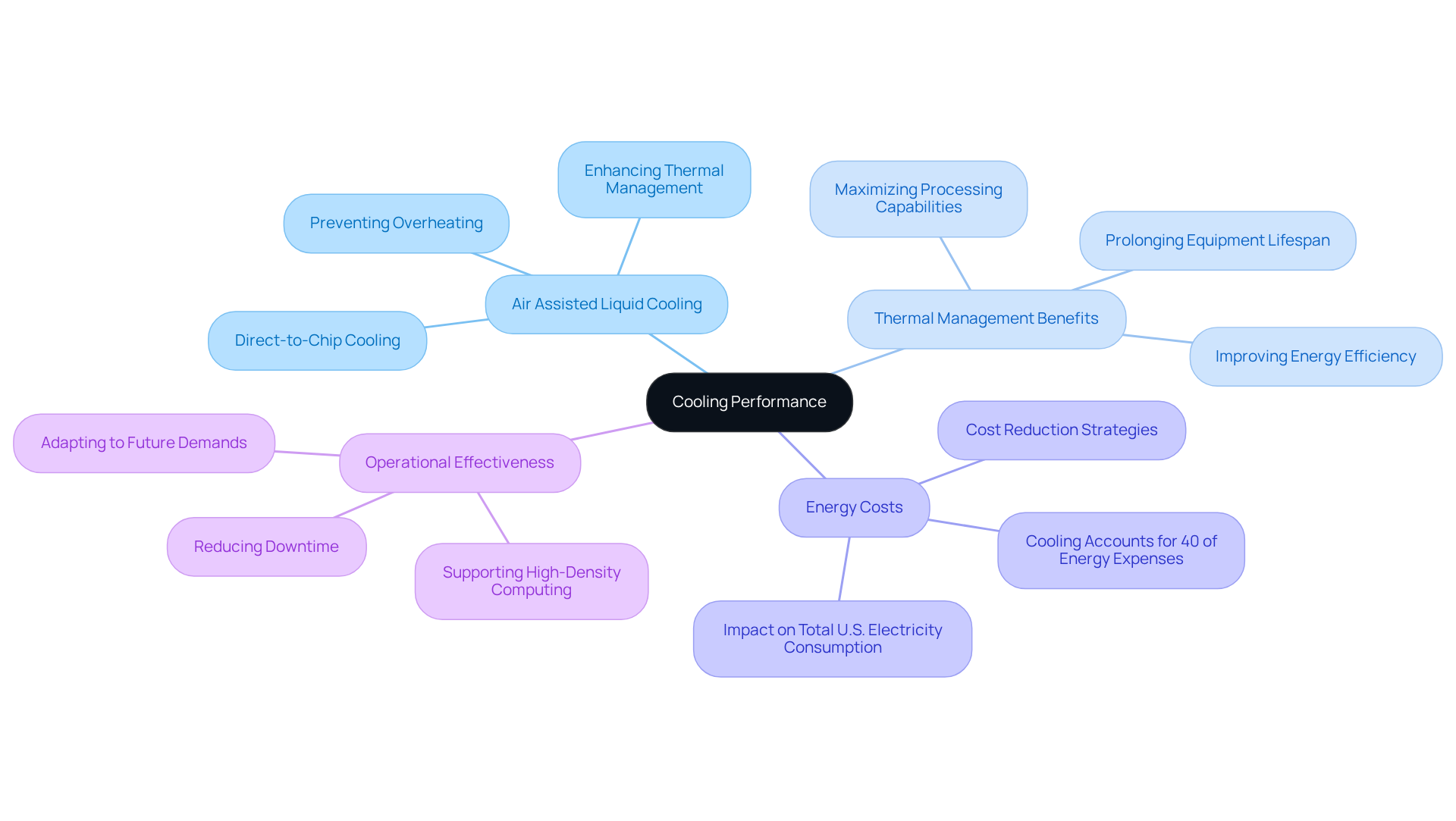
Scalability: Adapting Air Assisted Liquid Cooling to Diverse Data Center Needs
systems exemplify remarkable scalability, making them suitable for a wide range of server environments, from compact facilities to extensive hyperscale operations. These systems can be seamlessly integrated into existing infrastructures, necessitating minimal retrofitting as information hubs expand. This adaptability ensures organizations can effectively while sustaining optimal performance.
For instance, a midsize Tier 2 facility in Baltimore successfully transitioned from 100% air temperature regulation to incorporating , achieving significant , including an 18.1% reduction in facility power consumption. The ability to customize to meet specific operational requirements positions air assisted liquid cooling as an exceptional option for facilities anticipating future growth.
As Fred Rebarber, President of NSW PEP, emphasizes, ‘Maximizing the resource facility fluid temperature regulation application — regarding the percentage of the IT load managed by fluid — provides the greatest efficiency.’
Furthermore, the strategic placement and management of are critical for achieving efficiency and performance in , underscoring the sustainability advantages of fluid-based systems compared to traditional air systems, which typically exhibit a larger .
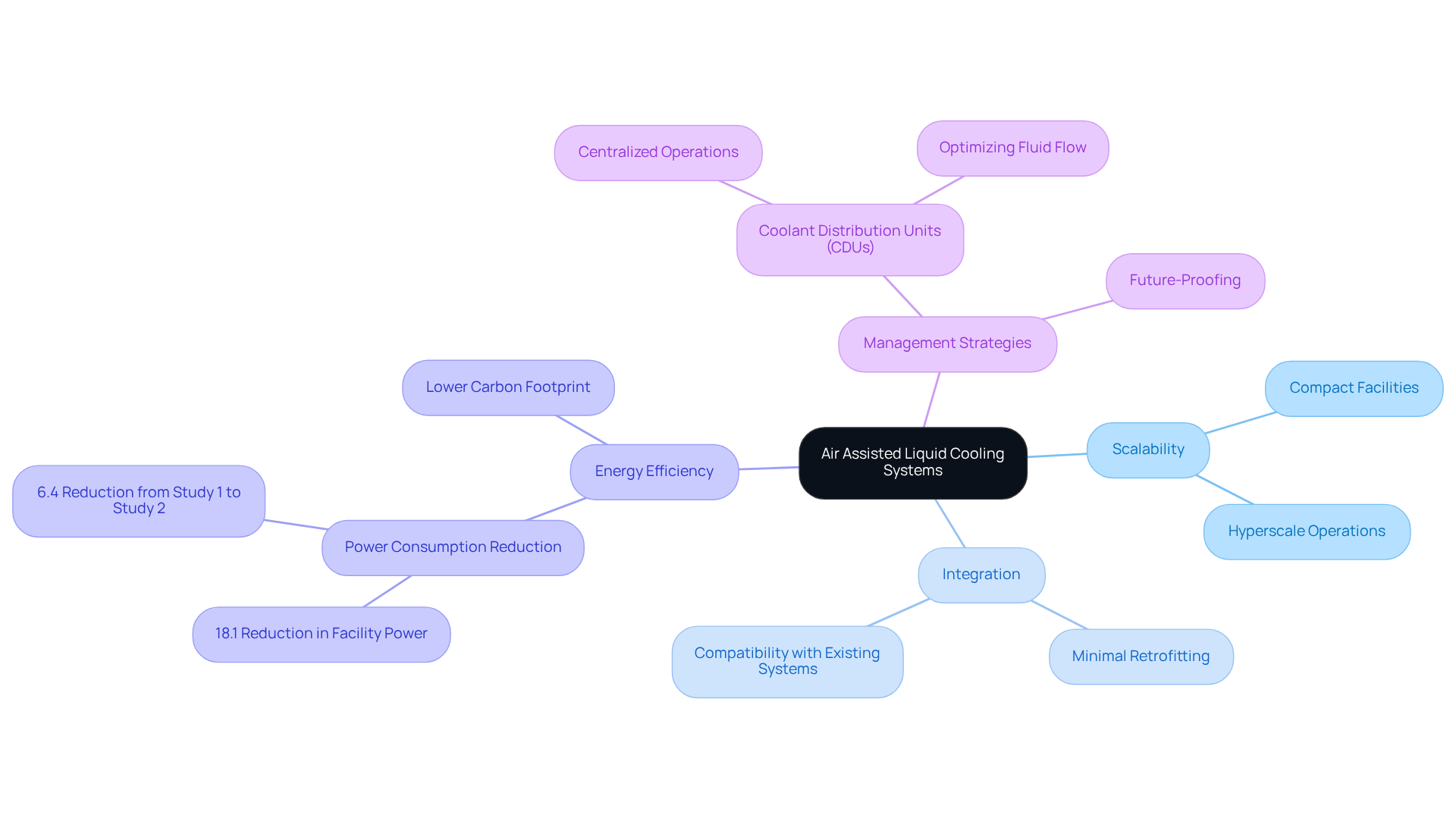
Reliability: Ensuring Continuous Operation with Air Assisted Liquid Cooling
are essential for maintaining , where is paramount. These systems feature , including multiple temperature control units and backup systems, significantly mitigating the .
The implementation of , for instance, enhances reliability, ensuring uninterrupted operations even if one unit encounters issues. According to the International Data Corporation, by July 2024, approximately 22% of information facilities were already integrating this technology in some capacity, with forecasts suggesting this figure could rise to nearly 50% in the coming years.
Moreover, the precise temperature management offered by air assisted liquid cooling systems greatly reduces the likelihood of overheating, thereby . As emphasized by a facility operator, ‘the effectiveness of overlapping systems for redundancy is essential in ensuring .’
By investing in robust , information facilities can sustain steady performance, minimize operational interruptions, and ultimately achieve their operational objectives.
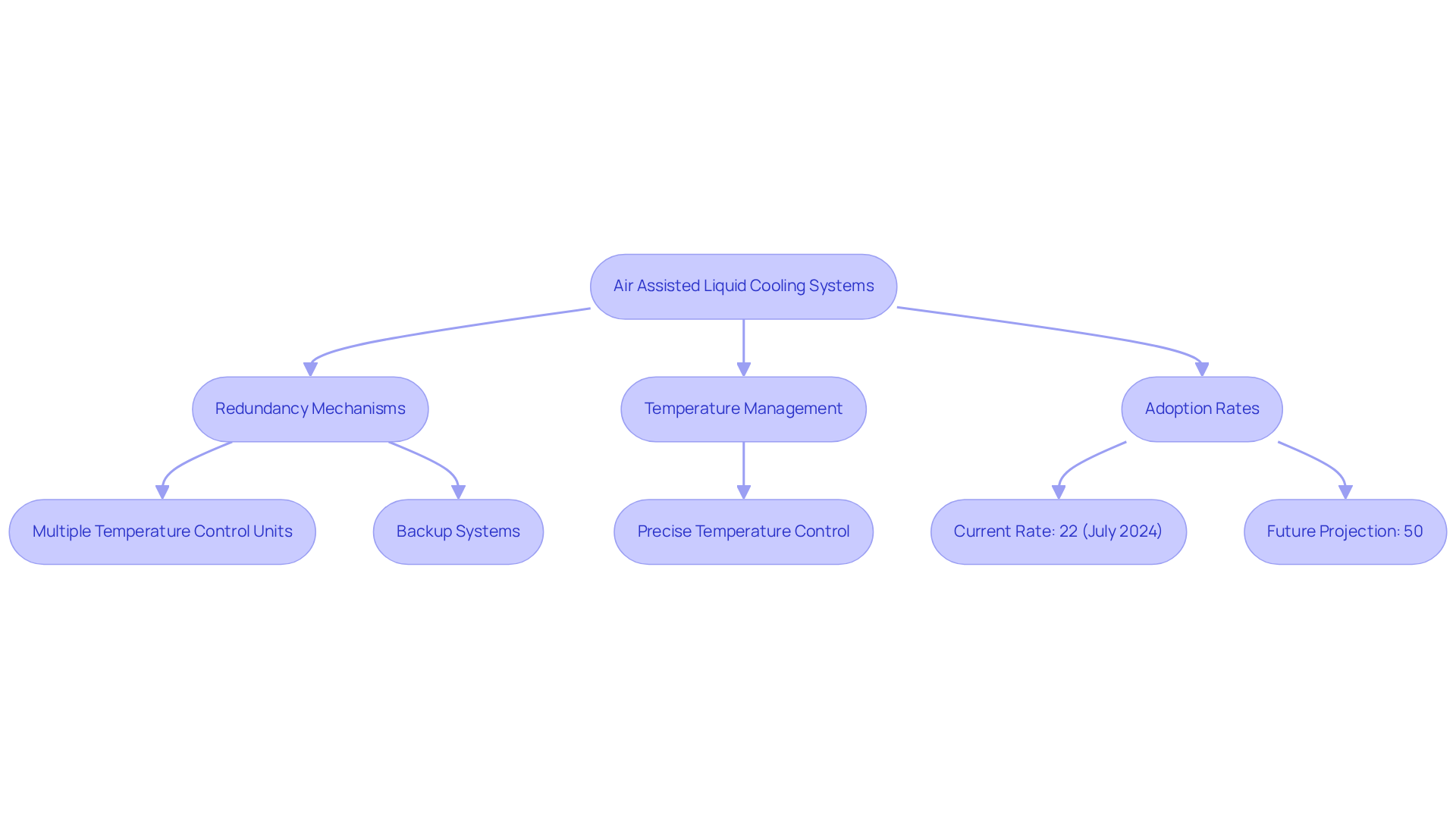
Integration: Seamlessly Incorporating Air Assisted Liquid Cooling into Existing Systems
Incorporating into current is facilitated by its flexible design. These systems can be integrated with conventional air temperature regulation methods, allowing organizations to while significantly enhancing efficiency. The enables customization tailored to various setups, streamlining the transition to advanced . This seamless integration minimizes and provides a smoother upgrade path, ensuring that organizations maintain throughout the transition. that this flexibility is crucial in addressing the unique challenges encountered during integration, as it allows for without necessitating a complete overhaul of existing setups.
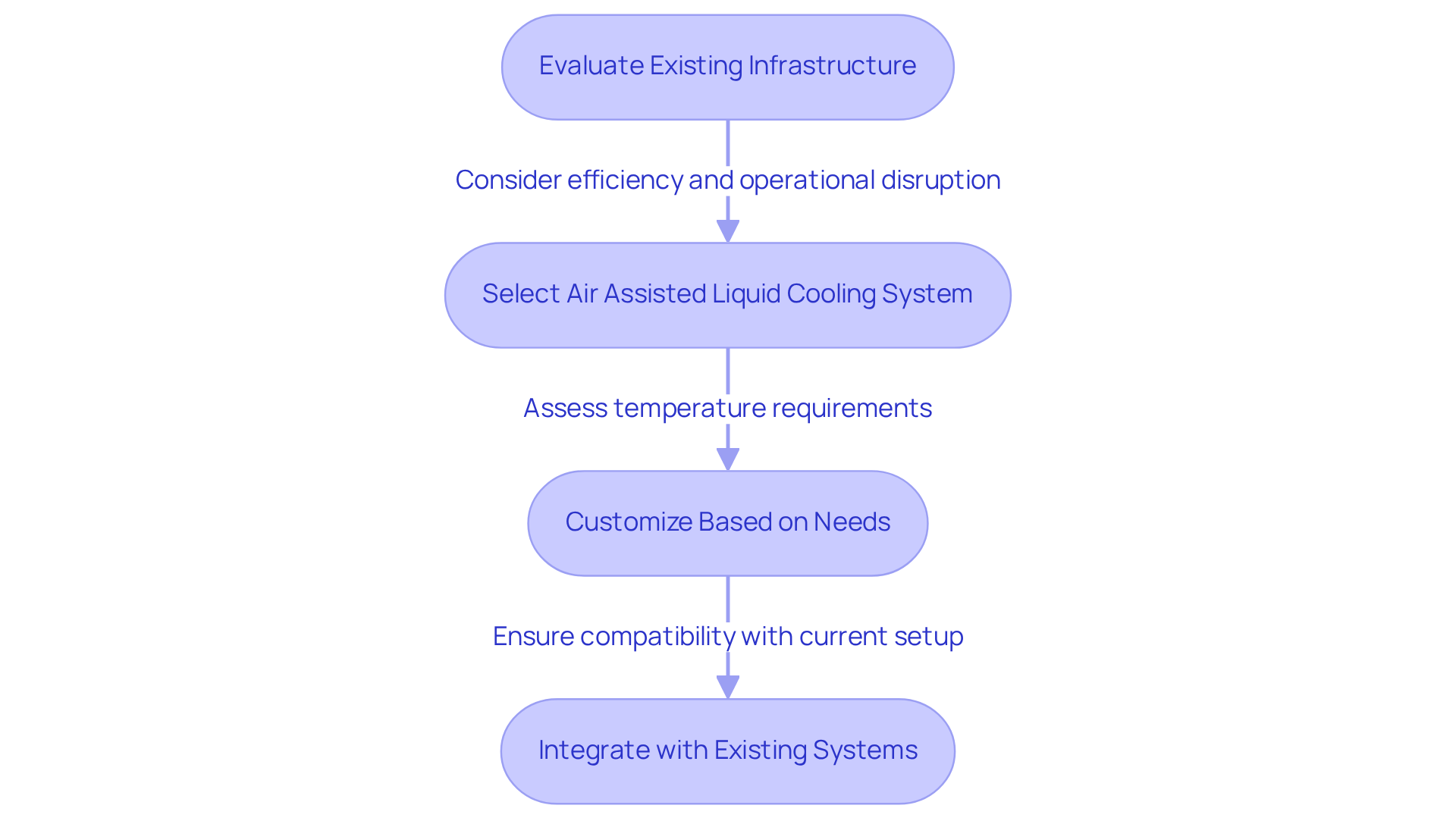
Maintenance: Simplifying Upkeep with Air Assisted Liquid Cooling Systems
systems stand out due to their ease of maintenance, setting them apart from conventional that often necessitate extensive upkeep. These sophisticated systems feature self-monitoring capabilities, enabling real-time performance tracking and the early detection of potential issues.
Industry data indicates that the maintenance frequency for air-assisted fluid management solutions is significantly lower than that of traditional systems, with inspection intervals extending up to 12 months. This , allowing facility operators to concentrate on their core business tasks.
Moreover, the incorporates easily accessible points for maintenance tasks, thereby streamlining the upkeep process. A demonstrated that the use of air assisted liquid cooling resulted in a 30% reduction in maintenance time compared to conventional methods.
The employment of , prolonging the intervals between maintenance checks. Consequently, this simplicity of upkeep not only enhances the overall efficiency of information facility operations but also contributes to their reliability, making air assisted liquid cooling a compelling choice for modern information facilities.
Facility operators have reported that these systems have simplified , enabling them to focus on innovation rather than upkeep.
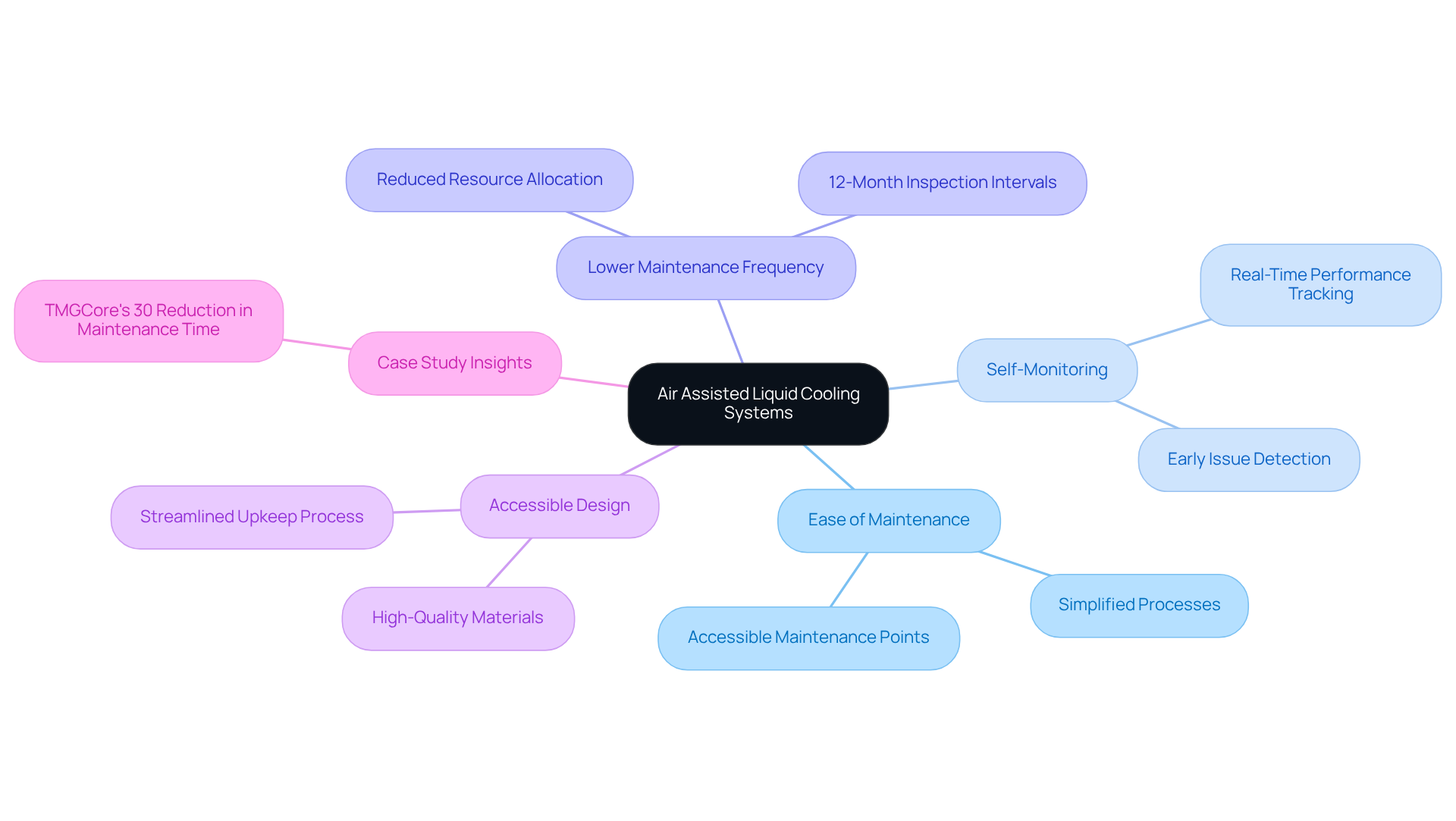
Redundancy: Boosting Data Center Resilience with Air Assisted Liquid Cooling
systems inherently provide redundancy, which is a critical factor for maintaining . These systems can be configured with multiple operating concurrently, utilizing air assisted liquid cooling to ensure that if one unit fails, others can seamlessly take over without compromising performance. This redundancy not only enhances the but also provides reassurance to system operators, who can be confident that their setups are equipped to handle unforeseen challenges. By investing in , organizations can effectively safeguard their and ensure .
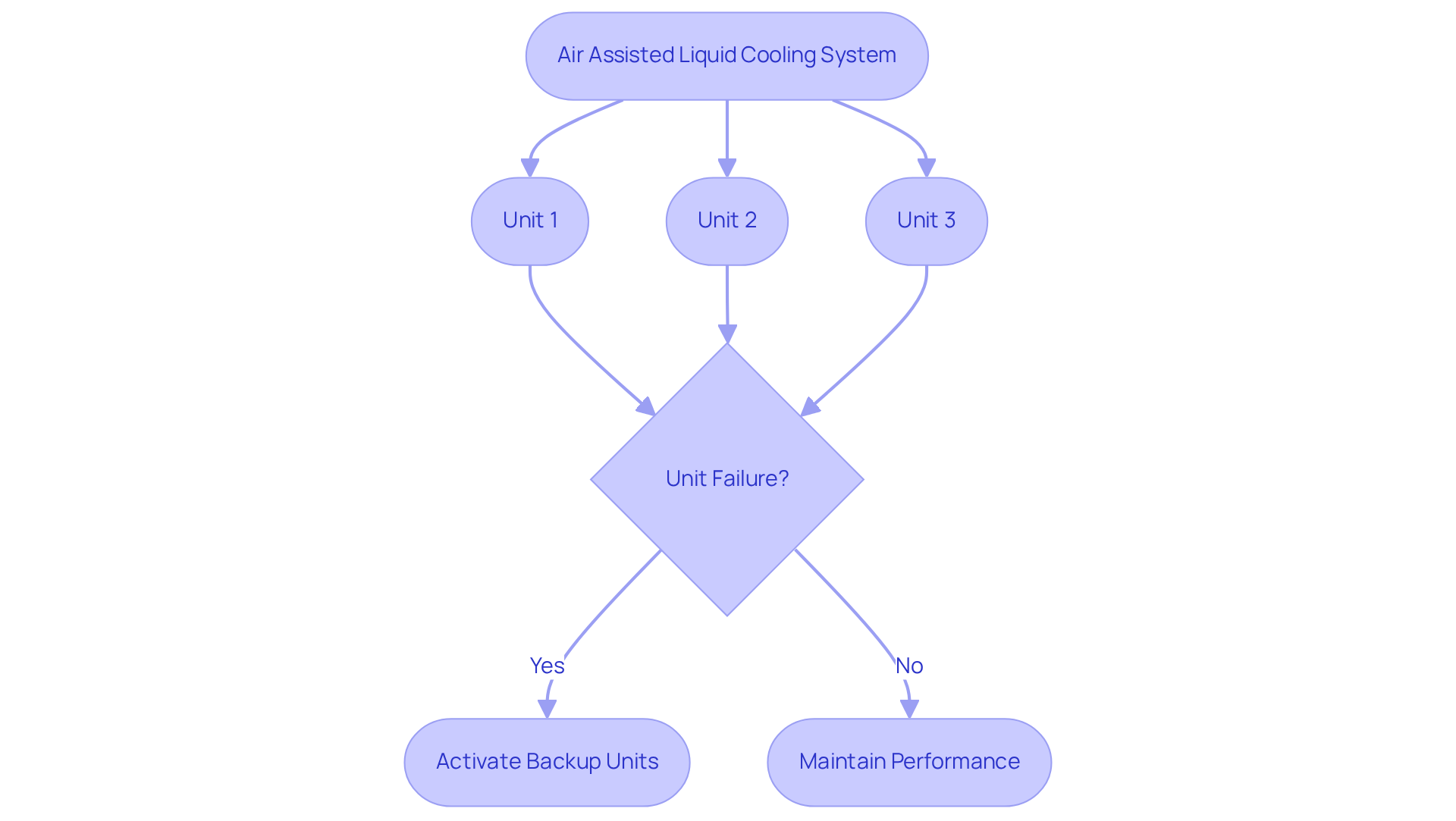
Cost-Effectiveness: Maximizing Value with Air Assisted Liquid Cooling Solutions
solutions offer a compelling, to conventional , providing substantial advantages for facility operators. These systems markedly diminish , resulting in operational cost savings that accumulate over time. Research indicates that implementing fluid thermal management can yield a 10.2% reduction in overall and improve Total Usage Effectiveness by over 15%.
Furthermore, the decreased maintenance requirements associated with enhance its cost-efficiency, enabling organizations to allocate resources more effectively. Although the initial investment in air assisted may be higher, the through improved and reduced operational expenses frequently outweigh these costs.
As financial analysts assert, ‘the long-term benefits of liquid cooling often outweigh the initial challenges for ,’ positioning air assisted liquid cooling as a strategic choice for data centers striving to enhance performance and sustainability.

Conclusion
Air assisted liquid cooling systems represent a transformative approach to temperature management in data centers, offering substantial advantages over traditional cooling methods. By leveraging fluid for temperature regulation, these systems enhance energy efficiency, reduce operational costs, and contribute to sustainability efforts. This ultimately empowers organizations to optimize their performance while minimizing their environmental impact.
The key benefits include:
- Improved cooling performance, which is critical for maintaining optimal server temperatures and ensuring reliability.
- The scalability of these systems facilitates seamless integration into existing infrastructures, accommodating diverse operational needs without extensive retrofitting.
- The simplicity of maintenance and built-in redundancy features further bolster their appeal, ensuring continuous operation and resilience against potential failures.
As data centers evolve, embracing air assisted liquid cooling technologies is not merely a strategic move; it is a necessary step toward achieving operational excellence. Organizations are urged to explore these innovative solutions, recognizing their potential to enhance efficiency, reduce costs, and support sustainability initiatives. The future of data center cooling lies in the adoption of these advanced systems, paving the way for a more efficient and environmentally responsible industry.
Frequently Asked Questions
What is Gagner-Toomey Associates known for?
Gagner-Toomey Associates is recognized as a pioneer in air assisted liquid cooling solutions, particularly in the electronics sector, providing innovative technologies that enhance temperature regulation and overall performance.
What types of products does Gagner-Toomey offer?
Gagner-Toomey offers a wide range of products, including standard and custom air-movers such as DC input Tube Axial fans (ranging from 15 to 280mm) and Centrifugal Blowers (ranging from 15 to 225mm), all designed for peak performance and efficiency.
How do air assisted liquid cooling systems improve energy efficiency?
Air assisted liquid cooling systems enhance energy efficiency by using fluid as a temperature regulation medium, allowing them to operate at higher temperatures than traditional air methods, which reduces energy consumption and can lower energy costs by up to 20%.
What impact does temperature regulation have on energy consumption in information facilities?
Temperature regulation accounts for nearly 40% of the total energy consumed by information facilities, making effective temperature management strategies crucial for reducing overall energy usage and operational costs.
How does air assisted liquid cooling contribute to sustainability?
Air assisted liquid cooling systems support sustainability by optimizing energy consumption, which can lead to a reduction in greenhouse gas emissions by 15% to 82% and significant water conservation, saving over 125 million liters of water annually per data facility.
What are the future projections for air assisted liquid cooling in the thermal management market?
Projections indicate that air-assisted fluid refrigeration and fluid-to-fluid heat exchange will make up over a third of the thermal management market for facilities by 2028, positioning Gagner-Toomey to lead in this transformative area.
How does Gagner-Toomey ensure they meet client needs?
Gagner-Toomey employs a customer-centric approach, backed by a team of experienced sales professionals, to effectively respond to the evolving needs of their clients in the electronics sector.

